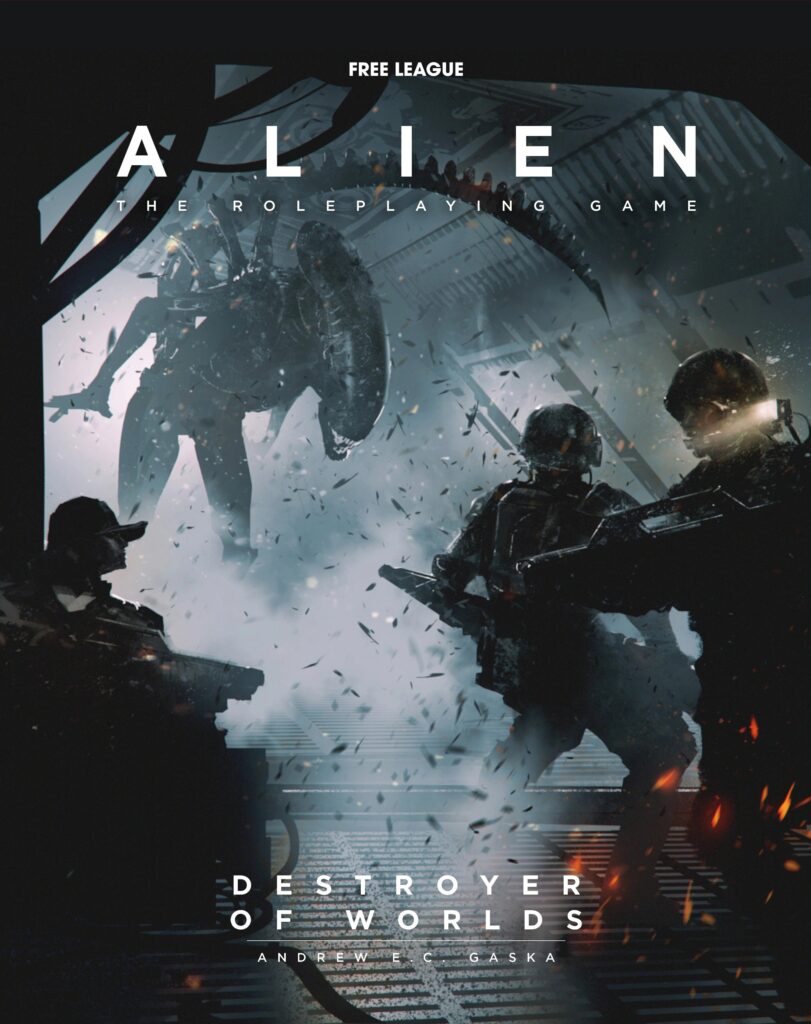In my A Game Per Year project, my goal has been to read one roleplaying game corebook for every year they’ve been published. However, I soon started to feel that it was hard to decipher how the games were really meant to be played. For this reason, I decided to start a parallel project, An Adventure Per Year, to read one roleplaying adventure for each year they’ve been published.

Destroyer of Worlds is a “cinematic adventure” for Alien: the Roleplaying Game. As far as I can tell, this means solid production values with maps and handouts aplenty, a duration of maybe three sessions, a concise and usability-focused presentation and personal story motivations and secrets for the prewritten player characters.
This latter is especially noteworthy. During this reading project, I’ve started to think that for a large swathe of the traditional roleplaying game industry, designing motivations for individual player characters seems to be unfamiliar territory. When it’s done, it’s done badly. In Destroyer of Worlds, the motivational design is baseline average, already lifting it into a higher realm than the majority of comparable releases.
What’s interesting is that the adventure breaks down into acts and the characters have motivations spelled out for each act, on printed card the GM gives to the players. This way, it’s possible to have the fractuous group dynamics typical of horror scifi.
Alien: the Roleplaying Game is one of the best licensed games out there because it captures the bleak, relentlessly grim atmosphere of the movies very well. If there’s one survivor, that counts as a happy end. That same atmosphere pervades Destroyer of Worlds as well. The characters are Colonial Marines tasked with the capture of a squad of deserters on a moon that used to house an oil drilling operation and has since become a military outpost.
As the characters try to fulfill their objective, things start to go catastrophically wrong on a colony-wide scale. The scenario is not lacking for cinematic set-pieces, with all the special effects drama you’d expect from a high budget movie on display. This is one of the strengths of the design: The colony feels like a living environment where huge things happen, changing the terrain the characters are trying to navigate.
Usually the strategy of roleplaying game publishing is to have a corebook that contains the basic essentials of the game and a starter set that acts as an introductory product pointing people towards the corebook. Interestingly, Destroyer of Worlds refers the reader to both the Starter Set and the corebook (“page XX in the corebook and YY in the Starter Set“), meaning that you don’t need to buy the corebook at all. You can play perfectly well with just the Starter Set and this box. A few details that don’t appear in the Starter Set have even been reprinted here to make this as easy as possible.
This tactic feels sensible in that the game is geared towards one-shots and short campaigns. That means that for many players, all the detail available in the corebook is superfluous.